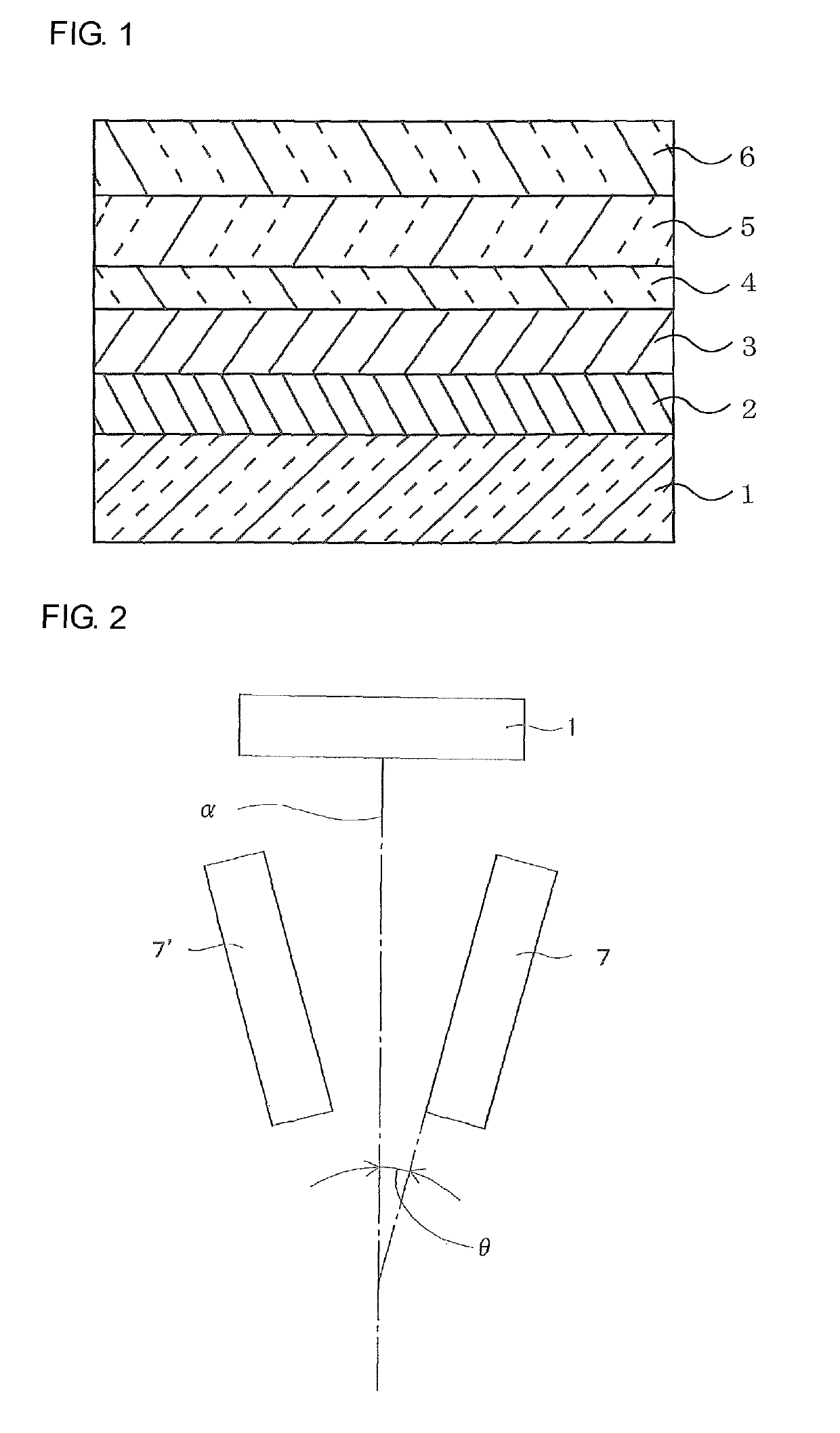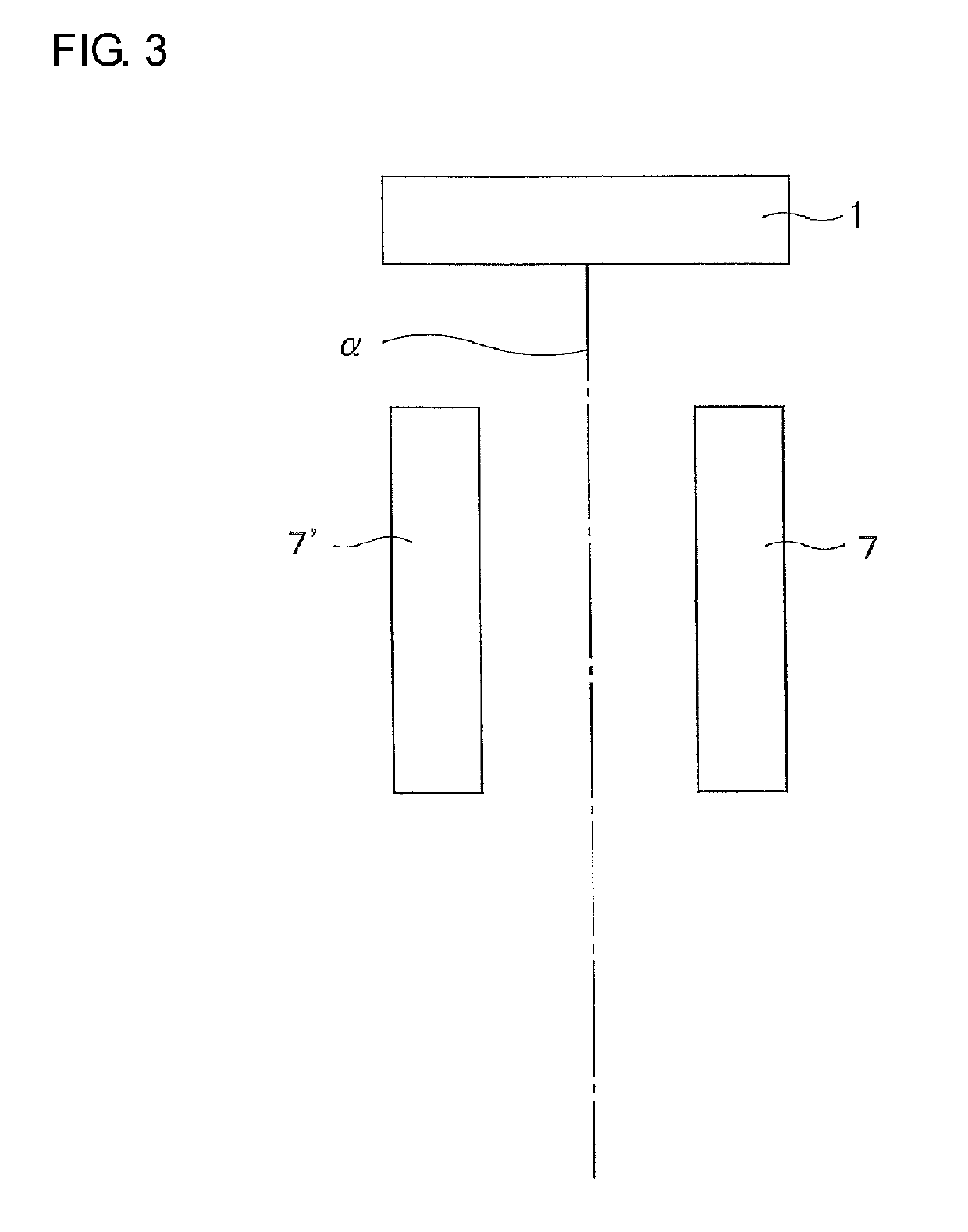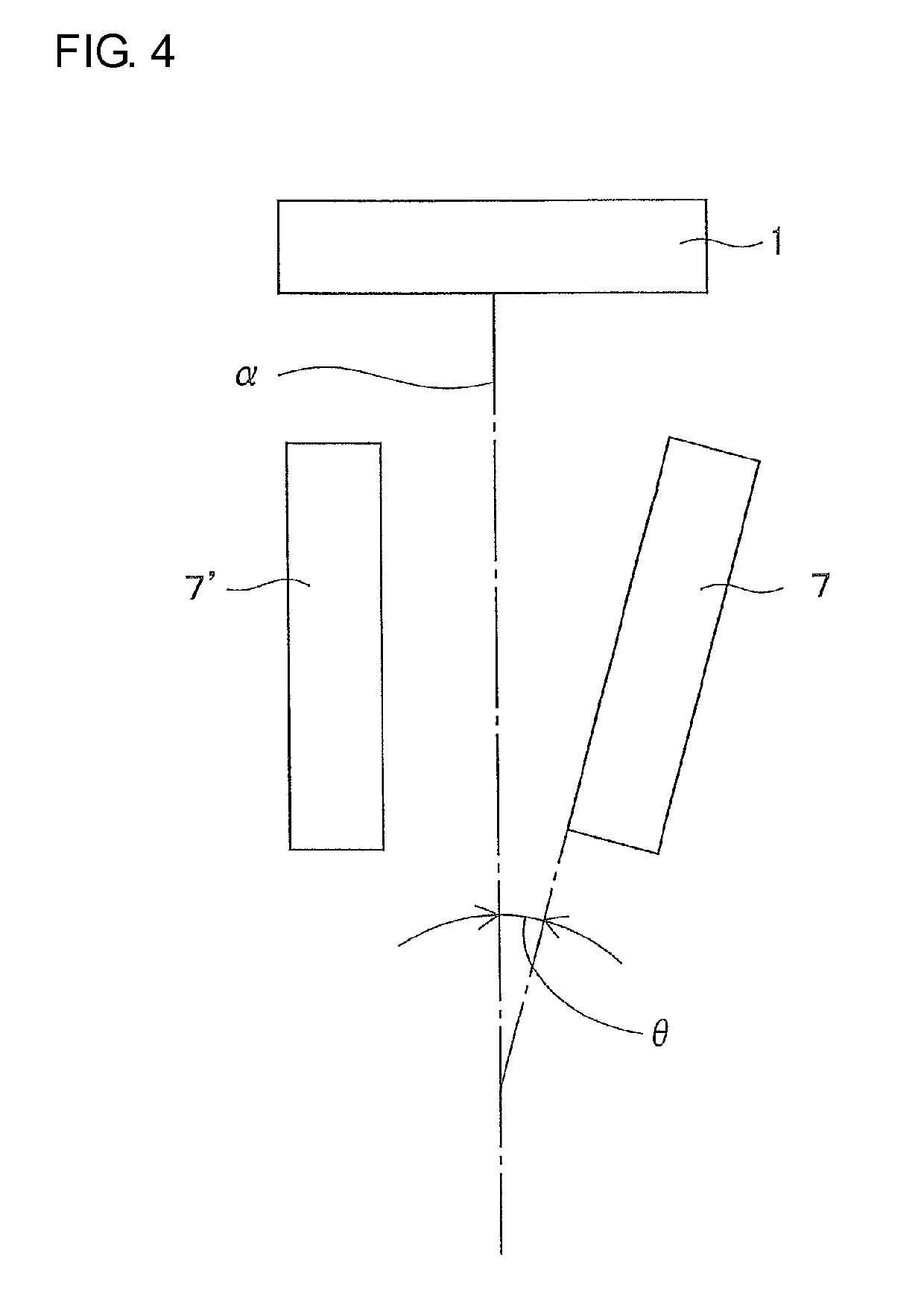Compound solar cell and production method therefor
a solar cell and production method technology, applied in the field of compound solar cells, can solve problems such as productivity reduction, and achieve the effects of preventing the reduction of conversion efficiency, and reducing the cost of production
- Summary
- Abstract
- Description
- Claims
- Application Information
AI Technical Summary
Benefits of technology
Problems solved by technology
Method used
Image
Examples
example 1
[0051](Formation of Back Side Electrode Layer)
[0052]On a degreased surface of a soda-lime glass substrate (having a thickness of 0.55 mm, a width of 20 mm and a length of 20 mm, and having a square shape as seen in plan), a back side electrode layer of Mo having a thickness of 0.8 μm was formed at a sputtering rate of 60 nm / min at a sputtering pressure of 1 Pa in an argon discharge gas with the use of a direct current (DC) power source by means of a magnetron sputtering apparatus (SH-450 available from Ulvac Inc.)
[0053](Formation of CIGS Light Absorbing Layer)
[0054]Next, a CIGS light absorbing layer was formed on the back side electrode layer formed in the aforementioned manner. That is, Ga, In, Cu, Se evaporation sources were placed in a chamber of the vacuum vapor deposition apparatus, and In, Ga and Se were simultaneously evaporated for 32 minutes with the chamber kept at a vacuum degree of 1×10−4 Pa and with the substrate temperature kept at 250° C. Thereafter, Cu and Se were si...
examples 2 to 27
[0061]CIGS solar cells were produced in substantially the same manner as in Example 1, except that conditions for the production were changed as shown below in Tables 1 to 3.
PUM
 Login to View More
Login to View More Abstract
Description
Claims
Application Information
 Login to View More
Login to View More - R&D Engineer
- R&D Manager
- IP Professional
- Industry Leading Data Capabilities
- Powerful AI technology
- Patent DNA Extraction
Browse by: Latest US Patents, China's latest patents, Technical Efficacy Thesaurus, Application Domain, Technology Topic, Popular Technical Reports.
© 2024 PatSnap. All rights reserved.Legal|Privacy policy|Modern Slavery Act Transparency Statement|Sitemap|About US| Contact US: help@patsnap.com










